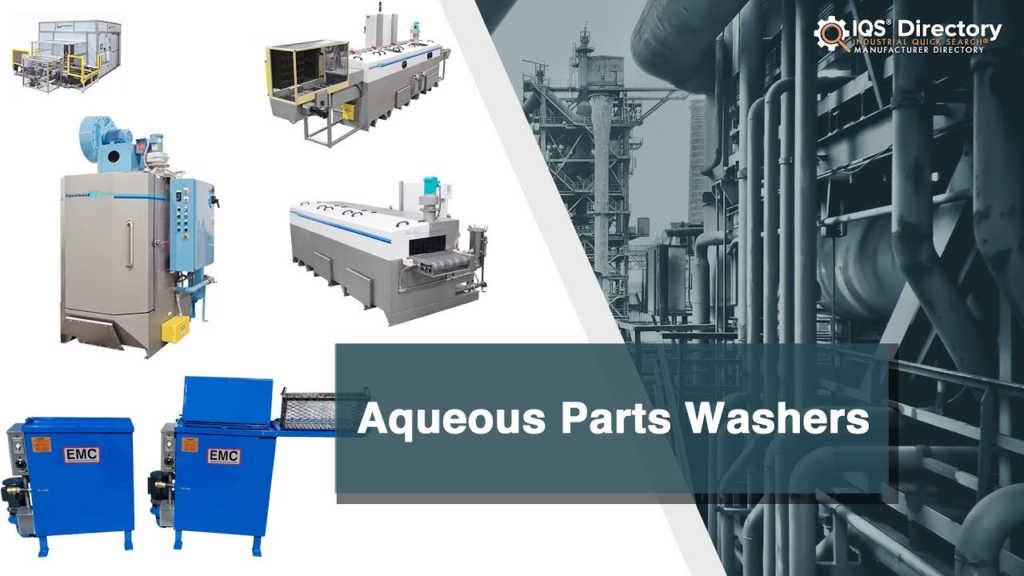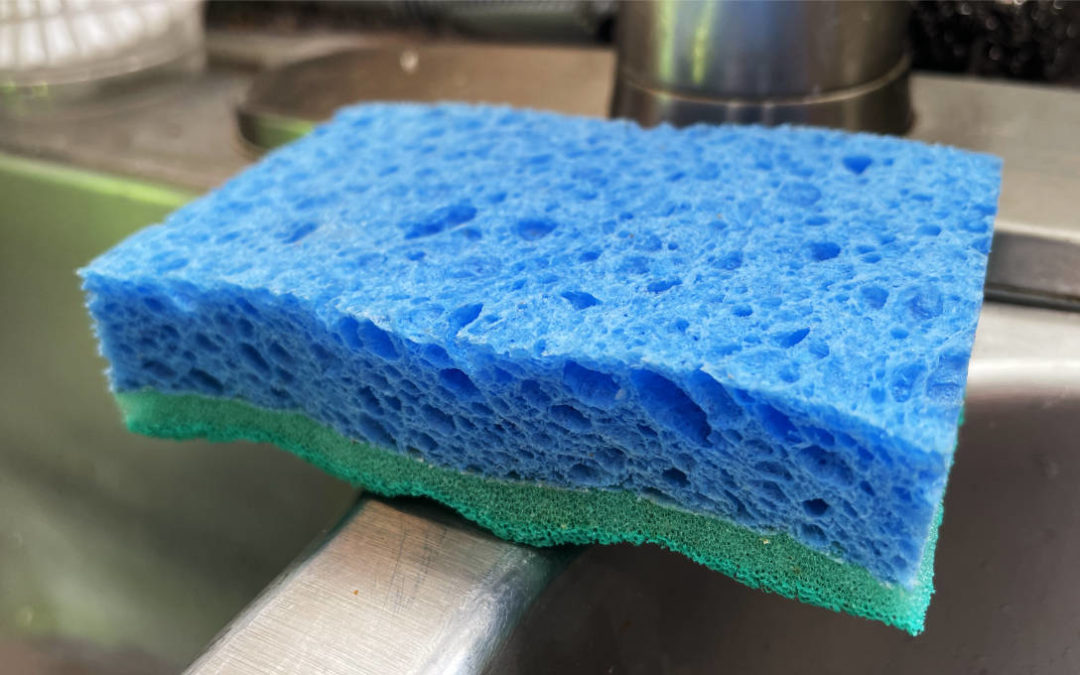In industrial maintenance and manufacturing, parts cleaning is critical in ensuring the longevity, efficiency, and safety of machinery and equipment. Over the years, various cleaning methods have been developed, each with unique advantages and limitations. Among these, aqueous cleaners have emerged as essential parts cleaning agents, owing to their environmental benefits, effectiveness, and versatility. This article delves into the significance of aqueous cleaners in parts cleaning, exploring their types, benefits, applications, and the future of parts cleaning technology.
The Role of Parts Cleaning in Industry
Before delving into the specifics of aqueous cleaners, it is essential to understand the importance of parts cleaning in the industrial sector. Parts cleaning removes contaminants such as dirt, oil, grease, metal shavings, carbon deposits, and other residues from mechanical components. This process is crucial for several reasons.
Firstly, contaminants can cause premature wear and tear on machinery, leading to costly repairs and downtime. Clean parts ensure that machines operate efficiently, reducing the risk of breakdowns. Secondly, even microscopic particles can cause malfunctions or defects in the final product in industries like automotive, aerospace, and electronics. Therefore, thorough cleaning is vital for maintaining product quality and safety. Lastly, in some sectors, like food processing and pharmaceuticals, cleanliness is a matter of efficiency and a regulatory requirement. Failure to maintain clean equipment can lead to severe consequences, including legal penalties and harm to public health.
Understanding Aqueous Cleaners
Aqueous cleaners are water-based solutions that clean parts and components in various industrial settings. Unlike solvent-based cleaners, which rely on chemical solvents to dissolve contaminants, aqueous cleaners use water as the primary medium. They are typically formulated with surfactants, detergents, emulsifiers, corrosion inhibitors, and other additives to enhance their cleaning effectiveness.
One of the fundamental principles behind aqueous cleaners is their ability to break the bond between the contaminant and the part’s surface. This is achieved through a combination of chemical reactions, mechanical action, and thermal energy. Depending on the specific cleaning requirements, the cleaning process can be further enhanced by the use of agitation, ultrasonic waves, or high-pressure sprays.

Types of Aqueous Cleaners
Aqueous cleaners come in various formulations, each designed for specific applications and contaminants. Below are some of the most common types of aqueous cleaners:
Alkaline Cleaners
Alkaline cleaners are the most widely used type of aqueous cleaner in industrial settings. They effectively remove organic contaminants such as oils, greases, and carbon deposits. These cleaners typically have a high pH (above 7) and contain alkaline salts like sodium hydroxide or potassium hydroxide. The high pH helps to break down and emulsify oils and greases, making them easier to wash away. Alkaline cleaners are commonly used in automotive, aerospace, and metalworking industries.
Neutral Cleaners
Neutral cleaners have a pH close to 7 and are generally less aggressive than alkaline cleaners. They are designed to clean delicate or sensitive surfaces that solid acids or alkalis might damage. Neutral cleaners are often used in the electronics industry, where precision cleaning is required without the risk of corrosion or damage to delicate components. They are also used in applications where mild cleaning action is sufficient, such as in the food and beverage industry.
Acidic Cleaners
Acidic aqueous cleaners have a low pH (below 7) and are typically used to remove inorganic contaminants such as rust, scale, and mineral deposits. These cleaners contain citric acid, phosphoric acid, or hydrochloric acid, which help dissolve and remove metal oxides and other mineral-based contaminants. Acidic cleaners are often used to maintain heat exchangers, boilers, and other equipment prone to scaling.
Emulsion Cleaners
Emulsion cleaners blend water and solvents designed to clean heavy soils and greases that might need to be effectively removed by water alone. These cleaners emulsify the contaminants, breaking them into smaller particles that can be easily rinsed away with water. The automotive industry often uses emulsion cleaners to clean engine parts and other heavily soiled components.
Enzymatic Cleaners
Enzymatic cleaners use enzymes to break down organic contaminants such as proteins, fats, and carbohydrates. These cleaners are particularly effective in healthcare, food processing, and pharmaceuticals, where organic residues are common. Enzymatic cleaners offer a gentle yet effective cleaning solution, making them ideal for applications where harsh chemicals cannot be used.
Benefits of Aqueous Cleaners
Aqueous cleaners offer several advantages over traditional solvent-based cleaning methods, which have contributed to their widespread adoption across various industries.
Environmental Friendliness
One of the most significant advantages of aqueous cleaners is their environmental friendliness. Unlike solvent-based cleaners, which often contain volatile organic compounds (VOCs) and hazardous air pollutants (HAPs), aqueous cleaners are typically non-toxic and biodegradable. It makes them a safer choice for workers and reduces the environmental impact of industrial cleaning processes. Additionally, using water as the primary solvent minimizes the risk of chemical spills and contamination.

Worker Safety
Aqueous cleaners are generally safer for workers to use compared to solvent-based cleaners. Solvents can emit harmful fumes that pose respiratory risks and cause skin irritation or burns. In contrast, aqueous cleaners are typically less volatile and less irritating, reducing the risk of exposure to hazardous chemicals. Furthermore, the reduced need for personal protective equipment (PPE) when using aqueous cleaners can improve worker comfort and productivity.
Cost-Effectiveness
While the initial cost of aqueous cleaning systems may be higher than that of solvent-based systems, the long-term cost savings can be significant. Aqueous cleaners are typically more efficient at removing contaminants, which can reduce the time and labour required for cleaning. Additionally, aqueous cleaning solutions can often be recycled and reused, reducing operational costs. The reduced need for hazardous waste disposal also contributes to cost savings, as managing and disposing solvents can be expensive and subject to strict regulations.
Versatility
Aqueous cleaners are highly versatile and can clean various materials, including metals, plastics, ceramics, and glass. It makes them suitable for multiple industries, from automotive and aerospace to electronics and healthcare. Customizing aqueous cleaning formulations to meet specific cleaning requirements further enhances their versatility.
Regulatory Compliance
As environmental regulations become increasingly stringent, industries are pressured to reduce their use of hazardous chemicals. Aqueous cleaners help companies comply with these regulations by providing a safer and more sustainable cleaning solution. By switching to aqueous cleaners, companies can reduce their environmental footprint and avoid potential fines and penalties associated with non-compliance.
Applications of Aqueous Cleaners
Aqueous cleaners are used in various industries for various cleaning applications. Below are some examples of how these cleaners are utilized in different sectors:
Automotive Industry
In the automotive industry, aqueous cleaners are used to clean engine parts, transmission components, brake systems, and other mechanical parts. Removing oils, greases, and carbon deposits is crucial for ensuring these components’ proper functioning and longevity. Aqueous cleaners are also used in manufacturing to clean metal parts before assembly or coating.
Aerospace Industry
The aerospace industry demands the highest standards of cleanliness and precision. Aqueous cleaners remove contaminants from aircraft components, including engines, landing gear, and hydraulic systems. The ability to thoroughly clean parts without causing damage or corrosion is essential in this industry, where safety and reliability are paramount.
Electronics Industry
In electronics, aqueous cleaners clean printed circuit boards (PCBs), connectors, and other sensitive components. Removing flux residues, oils, and other contaminants is essential for ensuring the proper functioning of electronic devices. Neutral aqueous cleaners are often used in this industry to prevent damage to delicate components.
Food and Beverage Industry
The food and beverage industry requires strict hygiene standards to prevent contamination and ensure product safety. Aqueous cleaners clean processing equipment, conveyors, and packaging machinery. Enzymatic cleaners help break down organic residues, such as fats and proteins, that can accumulate on equipment.

Healthcare and Pharmaceuticals
In the healthcare and pharmaceutical industries, cleanliness is critical to preventing contamination and ensuring patient safety. Aqueous cleaners are used to clean medical instruments, laboratory equipment, and pharmaceutical manufacturing equipment. Effectively removing organic residues, such as blood, proteins, and drug residues, is crucial in these industries.
The Future of Aqueous Cleaners in Parts Cleaning
As industries continue to evolve and face new challenges, the role of aqueous cleaners in parts cleaning is likely to grow. Several trends and developments are expected to shape the future of aqueous cleaning technology.
Advancements in Formumated Systems
Another trend expected to gain momentum is the integration of aqueous cleaning systems with automated and robotic systems. Automation can improve the consistency and efficiency of the cleaning process, reduce labour costs, and enhance worker safety. Automated aqueous cleaning systems can be programmed to clean parts with precision, ensuring that even the most complex components are thoroughly cleaned.
Sustainability Initiatives
As sustainability becomes a top priority for industries worldwide, the demand for environmentally friendly cleaning solutions will continue to rise. With their low environmental impact, aqueous cleaners are well-positioned to meet this demand. Companies are increasingly adopting sustainable practices, and using aqueous cleaners aligns with these initiatives. Developing more biodegradable and renewable cleaning agents will further enhance the sustainability of aqueous cleaning processes.
Customization and Specialization
The need for specialized cleaning solutions tailored to specific industries and applications is expected to drive the customization of aqueous cleaners. Manufacturers are likely to develop more targeted formulations that address the unique cleaning challenges different sectors face. This trend will result in more efficient and effective cleaning processes and improved outcomes in terms of cleanliness and product quality.
Increased Regulatory Pressure
As governments and regulatory bodies tighten environmental and safety regulations, industries will face increasing pressure to adopt safer and more sustainable cleaning practices. Aqueous cleaners, which already offer significant advantages in regulatory compliance, will become even more critical in helping companies meet these requirements. The shift towards greener cleaning technologies will be driven by regulatory pressure and consumer demand for more sustainable products.
Conclusion
Aqueous cleaners have become essential parts of cleaning agents in modern industrial processes. Their environmental benefits, safety advantages, versatility, and cost-effectiveness make them a preferred choice for various applications across various industries. As the demand for sustainable and efficient cleaning solutions continues to grow, aqueous cleaners are poised to play an even more significant role in the future of parts cleaning. With ongoing formulation, automation, and sustainability advancements, aqueous cleaning technology is set to continue evolving, offering even more significant benefits to industries worldwide.














Leave a Reply